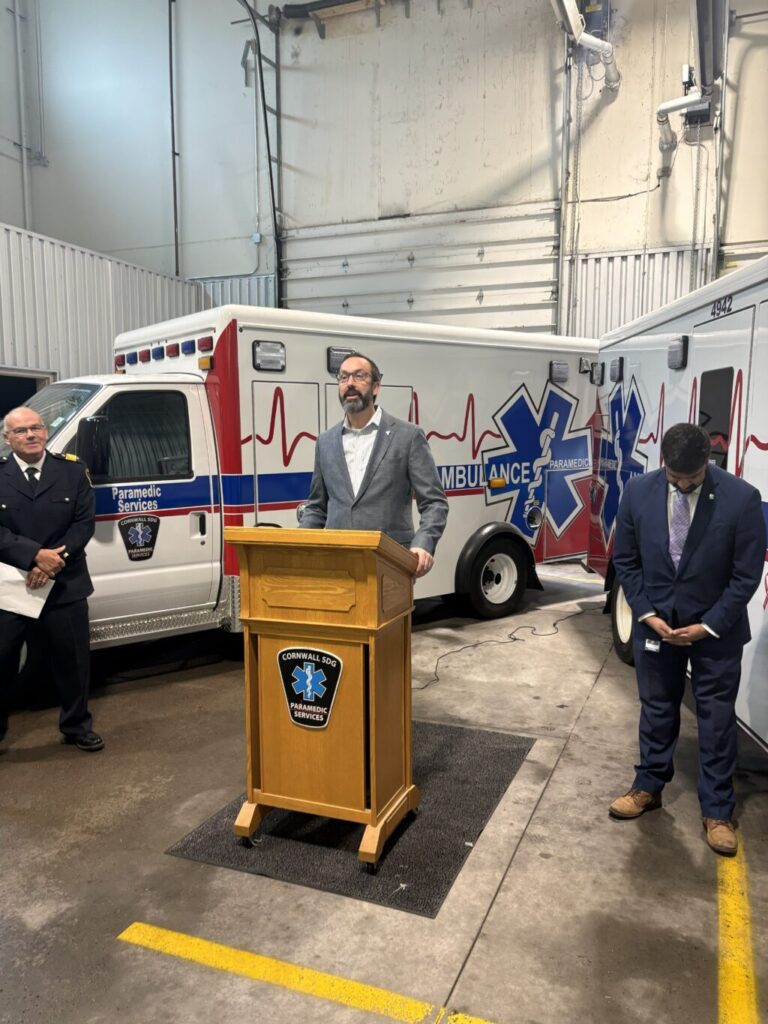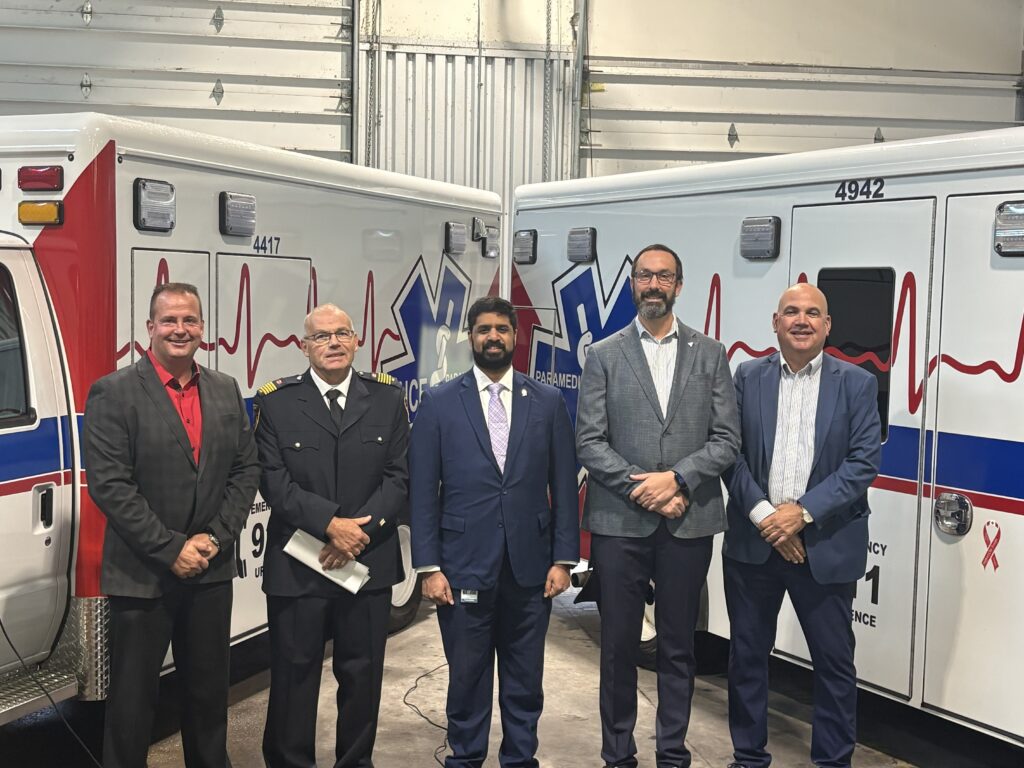Ontario Boosts Emergency Care Funding in Cornwall Ambulance offload times reduced by 65 per cent as province invests over $10 million locally
CORNWALL — The Ontario government is investing more than $10.5 million in Cornwall to help residents get faster access to emergency care and to support local paramedics and ambulances.
The new funding — an 8 per cent increase in land ambulance support for the region — brings the province’s total investment in Cornwall’s emergency response system to $10,521,539 this year. The goal is to help municipalities manage rising costs and maintain high-quality, timely care.
“Our paramedics and emergency departments provide life-saving care when our community needs it most,” said Nolan Quinn, MPP for Stormont–Dundas–South Glengarry. “This critical investment will ensure when an emergency happens, our loved ones receive timely, efficient and excellent health care, close to home.”

The funding is part of nearly $1 billion in land ambulance investments being distributed to municipalities across Ontario — an average increase of 8.7 per cent over 2024.
Deputy Premier and Health Minister Sylvia Jones said the initiative reflects the province’s commitment to strengthening emergency response. “Our government is making record investments to protect Ontario’s health-care system and connect people to the care they need, when they need it,” Jones said. “Through these additional investments, we are providing paramedics and emergency departments with the tools they need to connect more people across the province to high-quality emergency care, faster and closer to home.”
To further improve response times, Ontario is also expanding the Medical Priority Dispatch System (MPDS), which helps prioritize and triage emergency calls so paramedics can be dispatched more efficiently. The system has already been rolled out in cities including Mississauga, Kenora, Thunder Bay, Ottawa, and Kingston, with full implementation across all 10 remaining Central Ambulance Communication Centres now expected more than a year ahead of schedule.
Cornwall Mayor Justin Towndale welcomed the news, noting that the province’s continued support “helps to ensure that our Paramedic Services are able to continue to provide quick responses to life-saving calls across our region.”
Bill Lister, Chief of Paramedic Services, said the investment will go directly toward improving emergency response capabilities. “By investing in advanced equipment and providing our committed paramedics with essential resources, this support enables us to respond more effectively to emergencies and save lives.”
The announcement also builds on other provincial initiatives under Your Health: A Plan for Connected and Convenient Care, which aims to make care more accessible and reduce pressure on hospitals. More than 300 paramedic-led community care models are now operating across Ontario, allowing eligible 9-1-1 patients to receive appropriate treatment outside of emergency departments.
To address the growing demand for trained responders, Ontario has added over 300 new student spaces in college paramedic programs and expanded the Ontario Learn and Stay Grant, which now covers tuition, books, and other costs for first-year paramedic students. In exchange, graduates agree to work in their region for at least six months for every year of funding received.
These combined efforts, provincial officials say, are already showing results — with ambulance offload times down 65 per cent and more patients being connected to care faster than before.





